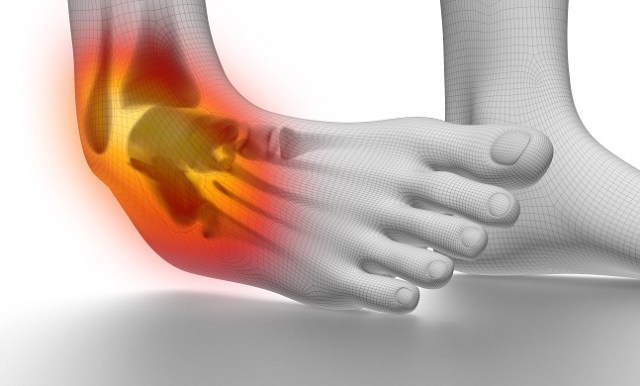Ankle Sprain
What is ankle ligament injury?
Ankle sprains are the most common of all sports related injuries, accounting for over 25% of cases. They are probably even more common in pedestrians and country walkers who stumble on stairways, pavements and potholes. In more than 75% of cases, it is the lateral ligament complex that is injured- in particular the anterior talofibular and calcaneofibular ligaments.
A sudden twist of the ankle momentarily tenses the structures around the joint. This may amount to no more than a painful wrenching of the soft tissues what is commonly called a ‘sprained ankle’. If more severe force is applied, the ligaments may be strained to the point of rupture. With a partial tear, some of the ligament remains intact and once it has healed, it is able to stabilizer the joint. With a complete tear, the ligament may still heal but it might not regain its original form and length; the joint will potentially be unstable.
Causes
An ankle injury can be a result of-
- Falling
- Landing with instability after a jump
- Walking, running or exercising on an uneven surface
- Any activity which results in a sudden impact on your ankle
Symptoms
Following are the symptoms which indicate that a person may have an ankle-ligament injury-
- Tenderness when the area is touched
- Inability to walk
- Bruising
- Swelling
- If the ankle joint is dislocated and the ligament is torn, the ankle may feel unstable.
Acute injury of lateral ligaments
Clinical features
A history of twisting injury followed by pain and swelling could suggest anything from a minor sprain to a fracture. If the patient is able to walk and bruising is only faint and slow to appear, it is probably a sprain. However, if bruising is marked and the patient is unable to put any weight on the foot, this suggests a more severe injury. In an ATFL sprain, tenderness is maximal just distal and slightly anterior to the lateral malleolous. The slightest attempt at moving the ankle is extremely painful. It is impossible to test for abnormal mobility in the acute phase without using local or general anaesthesia.
With all ankle injuries it is essential to examine the entire leg and foot; undisplaced fractures of the fibula or the tarsal bones, or even the fifth matetarsal bone are easily missed and injuries of the distal tibiofibular joint and the peroneal tendon sheath cause features that mimic those of a lateral ligament strain.
Treatment
Non-operative treatment: Initial treatment consists of rest, ice, compression and elevation (RICE), which is continued for 1-3 weeks depending on the severity of the injury and the response to treatment. Cold compresses should be applied for about 20 minutes at regular intervals of 2 hours, and after any activity that exacerbates the symptoms.
The use of non-steroidal anti-inflammatory drugs (NSAIDs) in the acute phase can be helpful. There is evidence that in acute injuries, topical non-steroidal anti-inflammatory gels or creams might be as beneficial as oral preparations, probably with a better risk profile.
Functional treatment: Functional treatment i.e. ‘protected mobilization’, leads to earlier recovery of all grades of injury-without jeopardizing stability-than either rigid immobilization or early operative treatment.

